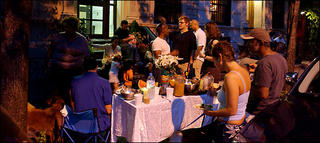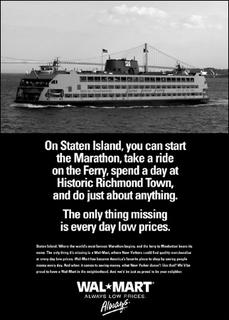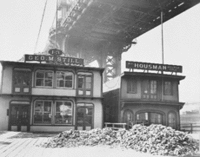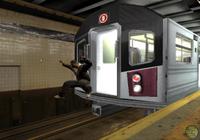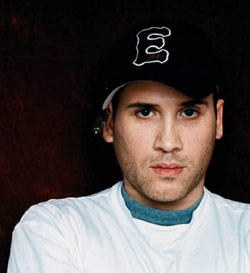New York Speeds Up Ad Replacement

Talk about making up for lost time. Almost eight years after its last advertising campaign, New York magazine plans to start one that will change contents almost every day.
The centerpiece of the campaign, which carries the theme "This is New York," will be posters at five subway stations in Manhattan that are to be replaced each weekday. (The poster pasters will get a break on weekends.) The stations are Columbus Circle, 42nd Street-Times Square, Pennsylvania Station-34th Street, 68th Street and Spring Street.
Many of the posters, scheduled to appear from Friday through Sept. 30, will be related to events of the day or week they are to run. For instance, as the Red Sox arrive in the Bronx on Sept. 9 to play the Yankees, the posters that day are to present the results of the teams' previous meetings this season - with space to write in the score of the game that night. On Primary Day, Sept. 13, the posters will depict lapel buttons for the four Democratic candidates for mayor.
And on Sept. 15, as the Feast of San Gennaro starts, the posters will list the calorie counts of favorite festival foods like calamari, cannoli, pizza and zeppole.
There are also plans for daily promotional events inspired by the posters, at the five stations as well as other sites around the city. For example, if one day the posters show a crossword puzzle from the magazine, commuters and pedestrians may be handed paper copies of the puzzle, along with pencils to use to solve it.
The campaign, intended to woo magazine advertisers as well as readers, will also include posters on 32 telephone kiosks around Manhattan, which will use a mirror-like reflective material to offer passers-by a literal representation of the "This is New York" theme. The ads will also serve to publicize a rebranding of the magazine's Web site to newyorkmagazine.com, from newyorkmetro.com.
The campaign, with a budget estimated at under $1 million, represents the first work for the magazine from its new agency, the New York office of Wieden & Kennedy. The agency was chosen without a formal review, said Lawrence C. Burstein, the publisher of New York, based on the cheeky, risk-taking work it produces, like the campaign for ESPN carrying the theme "This is SportsCenter."
Hmmm. "This is New York." "This is SportsCenter." Is there an echo in here?
The last ads for New York appeared in 1997. They were bus posters that stoked the ire of the mayor, Rudolph W. Giuliani, by declaring the magazine to be "possibly the only good thing in New York Rudy hasn't taken credit for." Those ads were created by DeVito/Verdi.
The new campaign is intended to generate attention for New York after a series of changes to its editorial contents, presentation and graphics under Adam Moss, who became the editor in chief early last year. It is also the first time the magazine is raising its voice under its new owner, Bruce Wasserstein, the Wall Street deal maker who acquired New York in late 2003 from Primedia.
New York magazine has been "a big part of the culture of New York," Mr. Burstein said in an interview last week, dating to its debut as a stand-alone publication in 1968 and before that as the last Sunday supplement of The New York Herald Tribune newspaper.
"We felt we needed to get out there and show people more of what we're doing, more of what the magazine's about," Mr. Burstein said, particularly "to reach out to new readers."
The ads are to arrive not long after a competitor of New York's, The New Yorker, generated attention with an issue that had the discount retailer Target as its sole advertiser. The coverage the issue received was indicative of the attention paid to publications that are of, by and for the largest city in the United States, which is the largest advertising market in the world. Their ranks, online and offline, grow increasingly crowded, from Metrosource to Time Out New York to zagat.com.
"This is a city of incredible variety and the magazine tries to speak to and capture that variety," said Mr. Moss, who joined Mr. Burstein for the interview along with Todd Waterbury, executive creative director at Wieden & Kennedy New York.
After the agency figured out, Mr. Waterbury said, how "to express through static media this kinetic nature of the city," the decision was made to use the subway as the showcase because "it's the central nervous system of the city." Then began an exploration, not without its own nervousness, of the logistics of changing the posters so frequently.
"We can't quite function like a daily newspaper," Mr. Waterbury said, "but we'll do our best." For instance, if something especially newsworthy happens during the month, a poster on the subject could be added to the campaign.
The day-by-day aspects of the campaign will be overseen by the New York office of Outdoor Vision, a media planning and buying agency that specializes in out-of-home advertising. The ad space for the subway posters is being bought from Viacom Outdoor, part of Viacom, and the ad space for the mirror-like posters on the phone kiosks (which will remain posted, unchanged, throughout September), is being bought from Van Wagner Communications.
Jason Kiefer, vice president and managing director of the Outdoor Vision office, said that in his 11 years in the industry he had not heard of a campaign in New York that called for so many daily changes of subway posters.
"It's certainly a challenge," Mr. Kiefer said, adding: "Any time you create something new, there are always unforeseen problems that could happen. We're going to be monitoring the program very closely."
Mr. Kiefer said he intended to check on the stations himself to make sure the posters were being changed, sharing photographs he will take at each station with executives at the agency and the magazine.
"Thank God for digital cameras," he added.
That's So New York

